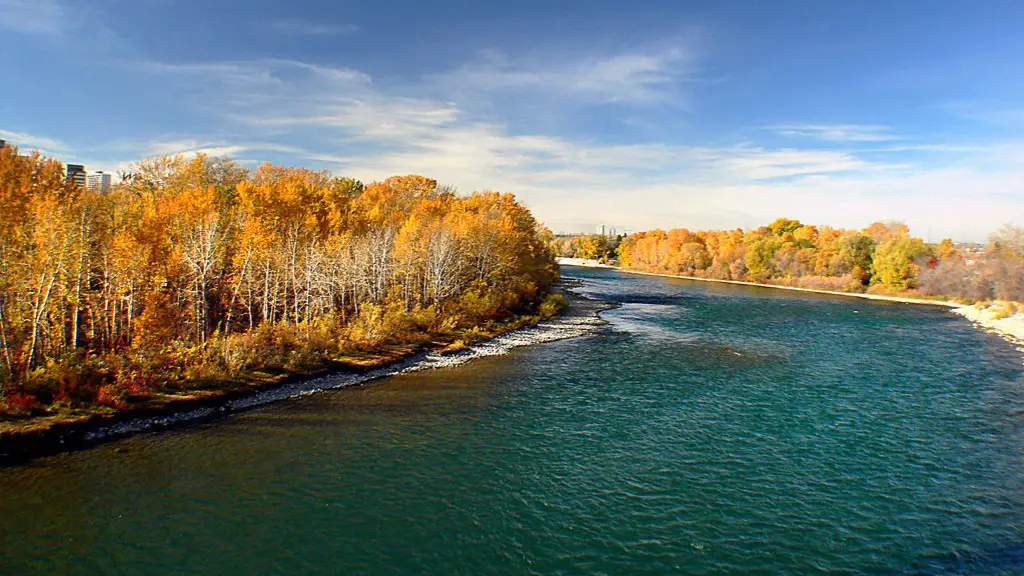Background Information
The Yangtze River is the third-longest river in the world, with a length of 6,300 kilometres and a drainage area of 1.8 million square kilometres. It is the longest river in China and the largest river in East Asia. The Yangtze River is the sixth largest river by volume in the world, with an annual average discharge of nearly 700 cubic kilometres. The Yangtze is one of the world’s most important rivers for its vital role in the economy and culture of China. The river has been severely polluted for decades, and there are ongoing efforts to reduce the pollution and its impact.
Pollution Sources
In recent years, the Yangtze River has seen an increase in both the amount and variety of pollutants. These can be split into two main categories: point source and non-point sources. Point sources are those that are identifiable, site-specific sources of pollution, such as industrial facilities and sewage treatment plants. Non-point sources are more difficult to identify but include agricultural sources, such as fertilizer and livestock manure, as well as general runoff from impervious surfaces.
The most prevalent pollutants in the Yangtze are due to industrial processes and domestic sewage. Industrial sources of pollution consist of chemical waste, oil and other hydrocarbons, and heavy metals. Domestic sewage releases large amounts of nutrients, such as phosphorus and nitrogen, into the river. These pollutants not only impact the water quality but also result in decreased oxygen levels, which can lead to eutrophication and an increase in algal blooms.
Impact on the Ecosystem
The pollutants present in the Yangtze River have had a detrimental effect on the river’s ecosystem. The balance of aquatic life in the river has been disrupted as a result of water degradation, leading to fish and other species becoming endangered or locally extinct. Pollutants such as mercury, lead, and cadmium at high levels can be toxic to humans, and can cause illnesses upon exposure.
The decline of fish and aquatic life has had a significant impact on the local economy, as one of China’s main sources of food comes from fishing in the Yangtze. Limitations on fishing in the river have contributed to rising food prices, while pollution-induced declines in crop yields have led to economic hardship in rural communities.
Environmental Protection Efforts
Given the serious threat to the environment caused by pollution of the Yangtze River, there have been numerous efforts to reduce its impact. The Chinese government has placed various restrictions on pollution, and has implemented the Yangtze River Basin Pollution Prevention and Governance Plan. This plan aims to gradualy reduce the pollutants discharged into the river.
In 2012, the Chinese government also launched the Yangtze River Economic Belt Plan, which includes the development of energy-saving and clean production, protection of existing ecosystems, and the improvement of sewage treatment and waste management systems. These plans have had a positive impact on the environment and have led to some improvements in water quality.
Community Efforts
In addition to government initiatives, members of the local community have taken it upon themselves to reduce pollution levels in the Yangtze River. Volunteers from NGOs, such as the Public Environmental Protection Fund, regularly participate in community-based clean-up activities, where they clear floating debris from the river. Local experts have also taken part in public education initiatives, teaching the younger generations about the importance of preserving the river’s ecosystems.
International Reactions
The pollution of the Yangtze River is an issue of international concern, and has drawn the attention of international organizations. The United Nations Environment Programme has expressed its concern over the pollution of the river, and has called for more action to address the issue. In recent years, the World Bank has also been involved in providing funding to sustainable development projects in the Yangtze region.
Technology-Assisted Solutions
In recent years, new technologies have been utilized to address the pollutants in the Yangtze River. The Chinese government has invested heavily in the use of advanced monitoring technologies, such as remote sensing and digital mapping, to identify and locate pollution sources. These technologies are being used to track pollution levels and identify ways to reduce them.
In addition, the development of digital water treatment systems is underway. These systems use sensors and artificial intelligence to detect pollutants and treat the water accordingly. These systems have the potential to dramatically reduce the amount of pollutants discharged into the Yangtze.
Conclusion
The pollution of the Yangtze River has become a major environmental concern in recent years, caused by both point and non-point sources. The effects of this pollution have been felt throughout China, with declines in aquatic life, damage to local economies, and increased health risks for humans.
Various initiatives from the Chinese government and local communities have been implemented to reduce the pollution levels, and new technologies are being utilized to address the issue. International organizations, such as the United Nations Environment Programme and the World Bank, have also been involved in providing support for projects aimed at reducing the pollution of the Yangtze River.


